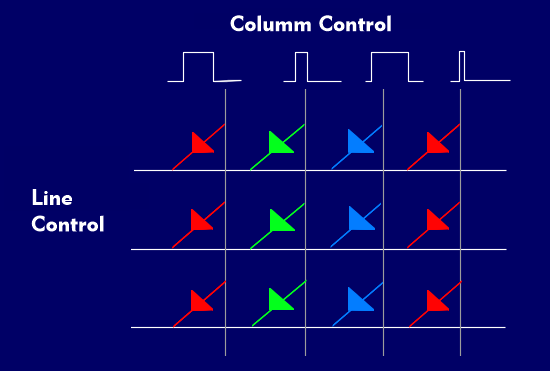passive matrix OLED (PMOLED)
Unlike Active Matrix OLEDs(AMOLED), Passive Matrix OLEDs (PMOLED) do not have thin-film transistors for activation. The individual electrodes of PMOLEDs - the anode, the organic layer and the cathode - are arranged in strips in rows, with the rows of the anodes perpendicular to those of the cathodes.
They can be driven by the cathode and anode lines, activating the organic light emitting diode( OLED) located at the intersection of the anode and cathode lines and emitting light. The brightness depends on the injected current.
Another control method is pulse width modulation( PWM). In this case, all cathode lines are simultaneously connected to ground and the organic pixels are driven via the anode lines with pulse width variation. This control is called single line addressing( SLA). The brightness of the OLEDs is controlled column-wise from the anodes using pulse width modulation (PWM). This means that certain OLEDs are turned on for shorter or longer periods of time and emit light. Thus, the overall brightness control is dependent on the row activation time and the pulse duration at the anode.
OLED displays made of PMOLEDs consume more power than those made of AMOLEDs, mainly due to the external control circuits. They are best suited for small screens and text displays, such as those used in PDAs and MP3 players.

_en.png)
